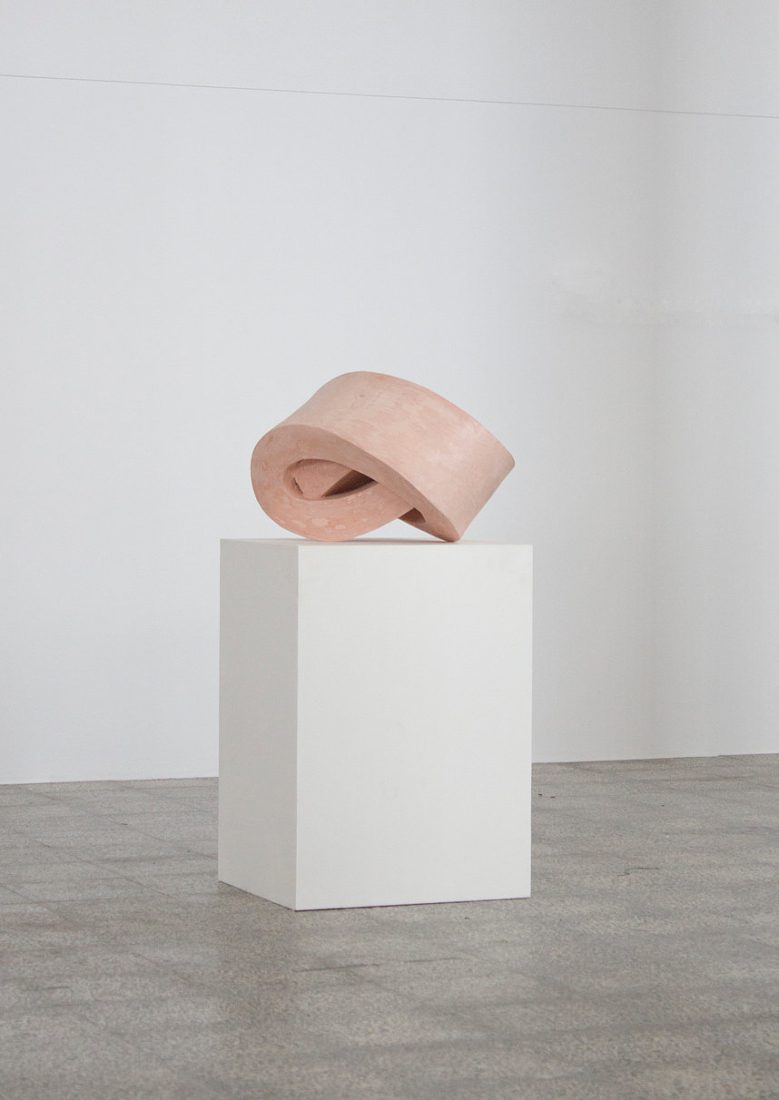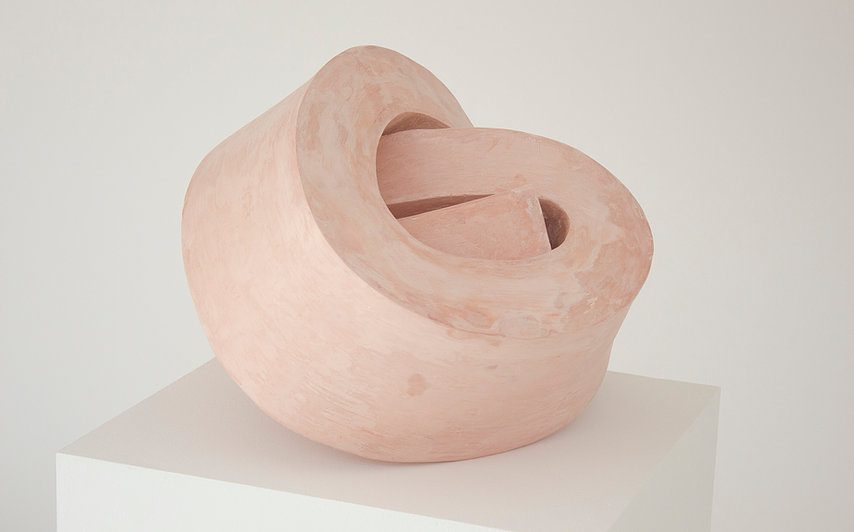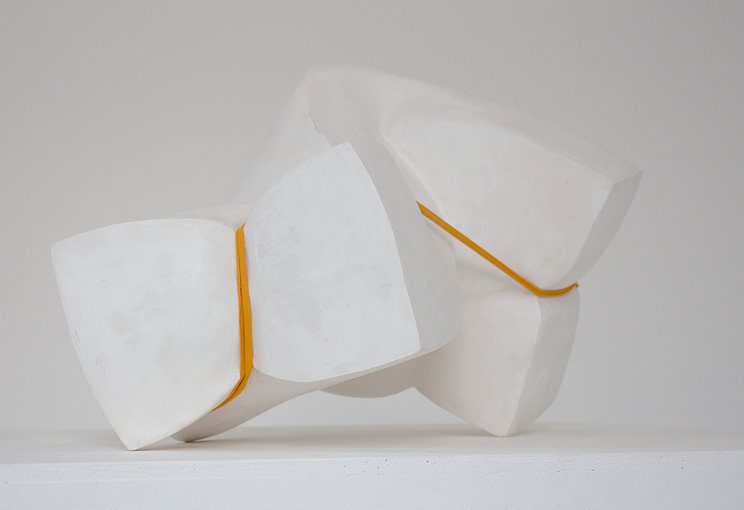Bence Magyarlaki

I slide between Two fingers Still (to be), 2019
Plaster, synthetic pigment polyurethane foam, resin
45x45x40cm
Bence Magyarlaki is a Hungarian artist (b. 1992) currently based in Paris. He graduated with First Class Honours-from BA Fine Art (Hons) at Central Saint Martins, London in 2017. His latest body of work has been supported by Montresso Art Foundation in Marrakech. His work was nominated for The MullenLowe NOVA Awards (2017), and The International Takifuji Art Award (2017). He has been exhibiting in Lisbon and London with PADA Studios (2019), The Swith Gallery, UX Art Space (Lisbon, 2018), and Saatchi Gallery, Gasworks Gallery and Copeland Gallery (London, 2017) among other exhibitions.
Magyarlaki’s sculpture and installation work explores the tension between architectural containment and the gestural, social body. In the intuitive process of uniting architectural and body language, the artist uses body memory as his site of production. Each shape therefore is an expression of a sensation remembered or revisited, often referencing the intimacy of one’s own body, or its relatedness and relative position to another. While the sculptures are made of hard casting materials used in architecture to create walls, separations and surfaces (concrete, plaster) the final shapes perform bends and twists alien to the physical properties of these materials. This softness and malleability is more than a trick of sensations. It is an invitation to reconsider the fixity of form, it is an expression of a dynamic capacity for movement or change. Instead of considering the body as oppressed by architecture – that appears here as a representation of societal control – the artist is proposing the body’s transformative potential within itself and in/within on the societal structures that control and police its desires. The sculptures offer an invitation for a more tactile, corporeal relationship with the object of art and the viewer, acting like social bodies with desires and repressions.




